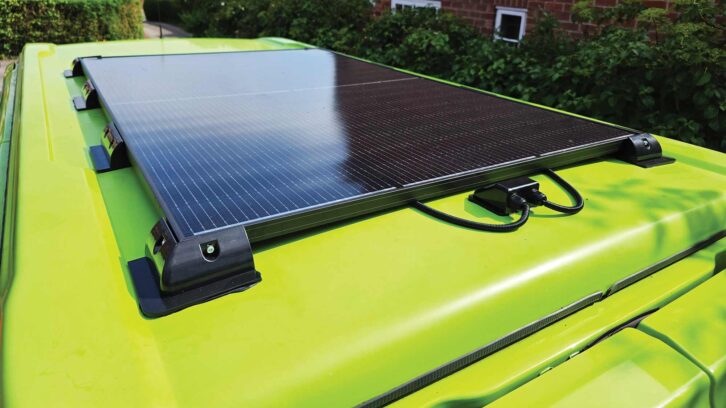Any campervanner or motorhomer who goes off-grid will find a solar panel a real touring essential, giving you access to cheap, green power. However, knowing the size of solar panel for your motorhome or campervan is not always the simplest of processes. If you’re unsure how to choose the right one, we’re talking you through the crucial considerations.
A quick look at the market will reveal motorhome and campervan solar panels with sizes of 50W to 200W. The exact one you choose is ultimately going to boil down to what you want it for and how you tour. A higher wattage is going to be more useful for those of you who are looking to power a motorhome off-grid, for instance.
Whichever size you opt for, a solar panel, just like one of the best portable power stations for van life, can be a game-changer. The way to think of it is this – the higher the wattage of your solar panel, the better the chance you will have of staying charged up.
If you’re a fan of campervanning and motorhoming off-grid on a frequent basis or want the freedom to use multiple devices, a solar panel with a higher-wattage is going to be the size to go for.
These will help you maintain your leisure battery and also gives you a better performance.
Our technical expert, John Sootheran, advises choosing:
- 50W to 80W: If you’re looking for a solar panel to charge your phone and keep the LED lighting running, this is the wattage to consider.
- 100W to 150W: For those of you who want to use your panels to power smaller appliances and keep your leisure battery topped up during a short tour, this size will be ideal.
- 150W to 200W: Frequent off-gridders will want this more powerful solar panel, which will be ideal for keeping water pumps, TVs, laptops and the like charged up when you’re on tour.
Choose the right one and you’ll be well on your way to some eco-friendly campervanning.
Once you’ve settled on the size, it will be time to think about the type you want. This could be a portable one that will need setting up each time, or it could be a roof panel which is fitted permanently.

This is a decision that is ultimately down to you. A roof panel could seem more appealing if you’ve tripped over a portable panel on numerous occasions, but if you opt for one, make sure it fits your motorhome’s roof first.
We’d recommend a rigid monocrystalline panel, as this is one which offers good long-term reliability and value-for-money. You could find flexible panels may look smarter, but you will find they’re less efficient and also provide a shorter lifespan.
We’d also advise pairing it with a decent MPPT charge controller. One that we like is the Victron SmartSolar 100/20, which combines reliability with being well-made. For ease, you can even monitor everything from your phone with the free Victron app.
Avoid using a cheap and unbranded PWM controller; it will limit the amount that can be harvested, something which can be a particular issue on a cloudy day. Instead, you will find that an MPPT unit is much more capable of getting better usable power even when there is only weak sunlight.
Don’t miss our tips on how to avoid a flat motorhome battery, either; there are several ways you can do to help avoid this from happening, as our expert Peter Rosenthal explains.
If you’ve enjoyed reading this article, why not get the latest news, reviews and features delivered direct to your door or inbox every month. Take advantage of our brilliant Practical Motorhome magazine SUBSCRIBERS’ OFFER and SIGN UP TO OUR NEWSLETTER for regular weekly updates on all things motorhome related.
Leave a Reply